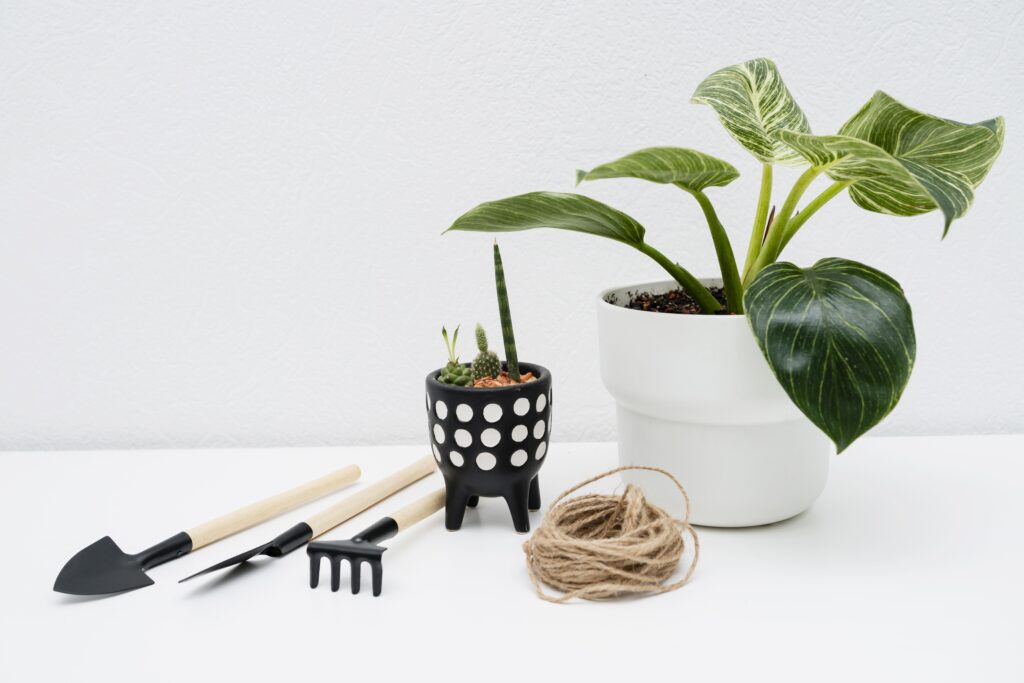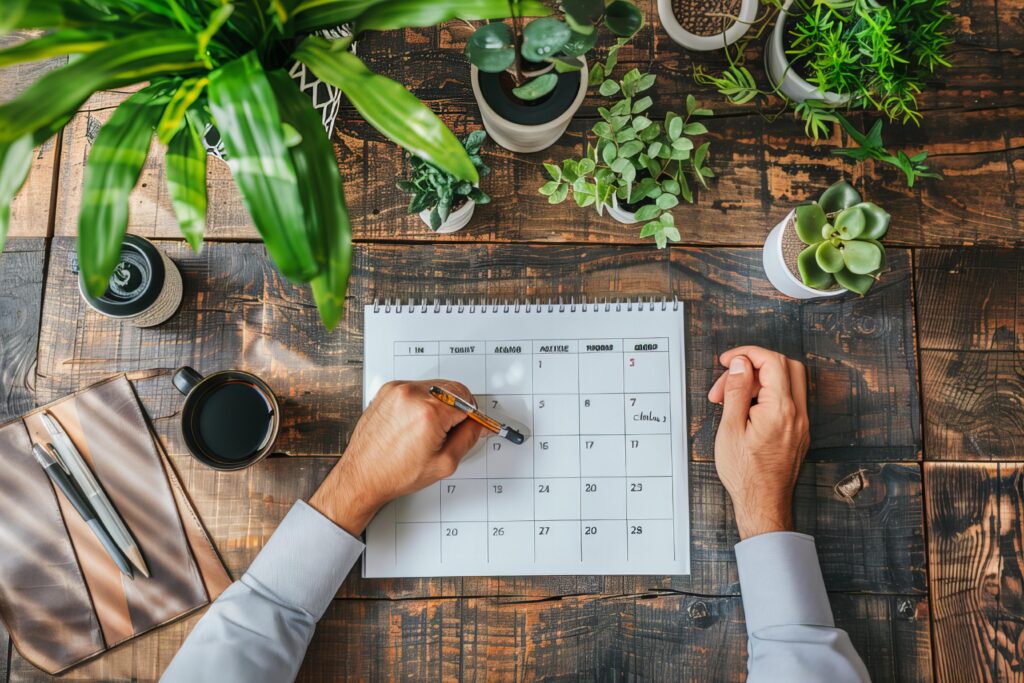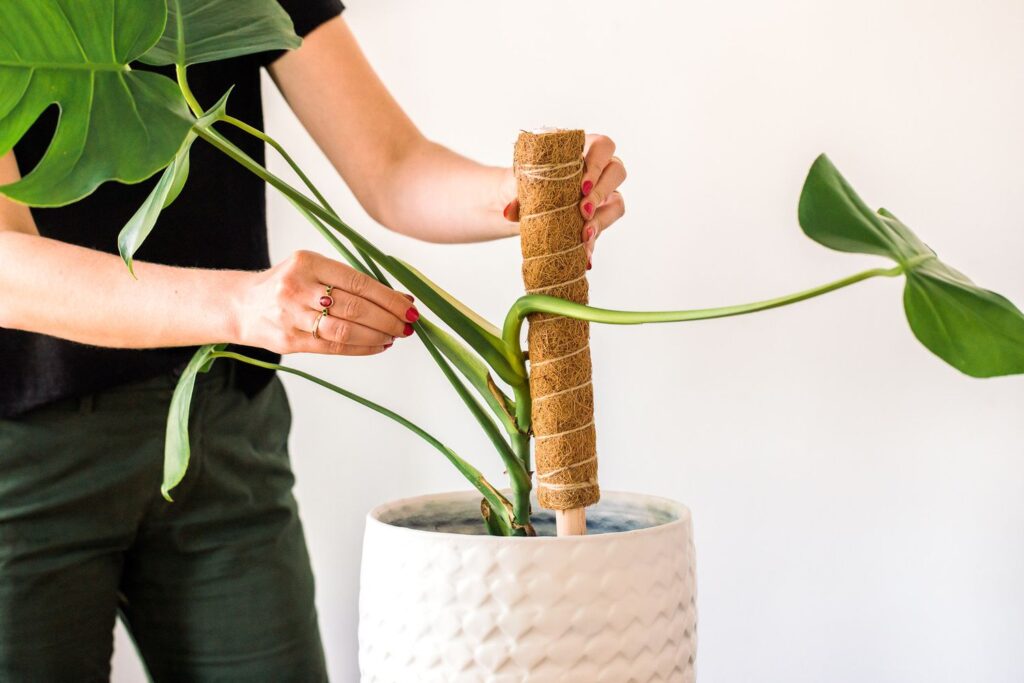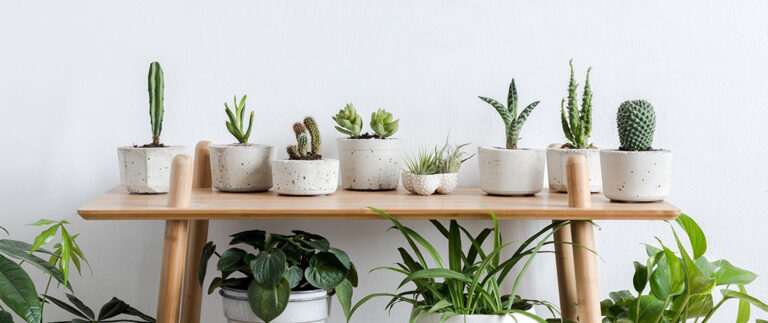Contents
Introduction
Indoor plants aren’t just a nice touch for your home—they’re like living decor that brings a splash of green into your life. They can boost your mood, clean the air, and even help with focus and relaxation. But if you’ve ever tried keeping a plant alive, you know it’s not always as easy as it looks. Without a bit of TLC, those vibrant greens can quickly turn into wilted browns.
That’s where a solid indoor plant care routine comes into play. Think of it as a simple game plan that helps you keep your plants healthy and thriving. Just like you need regular meals, a good sleep schedule, and a bit of exercise to stay at your best, your plants need their own set of regular care routines to stay in tip-top shape.
But where do you start? Don’t worry if you’re new to this—creating a perfect plant care routine doesn’t have to be complicated or overwhelming. In this guide, we’ll walk you through everything you need to know, from understanding what each plant needs to setting up a schedule that works for you. We’ll also cover the tools that can make your life easier and give you tips on what to do if things go a bit off track.
So grab a cup of coffee (or tea) and let’s dive into the world of indoor plant care. With the right routine, you’ll be able to enjoy the lush, vibrant greenery of healthy plants without the stress and confusion. Let’s get started on making your indoor garden thrive!
Understanding Your Plants
So, you’ve decided to dive into the world of indoor plants—great choice! But before you start picking out pots and soil, it’s crucial to get to know your plants a little better. Think of this as meeting a new friend; the more you know about them, the better you can care for them.
First off, indoor plants come in all shapes and sizes, each with its own quirks and needs. Some plants are as low-maintenance as a pet rock, while others might require a bit more attention. You’ve got your tropical beauties, like the elegant fern or the lush pothos, which thrive in warm, humid conditions. Then there are the hardy succulents and cacti, perfect for those who might forget to water every now and then—they’re pretty tough!
Each type of plant has its own set of preferences. Let’s start with light. Some plants are sun-lovers, needing bright, direct light to feel their best. Others prefer a more shaded spot, enjoying just a gentle, indirect glow. Water is another biggie. Over-watering can be just as harmful as under-watering, so knowing how much and how often to water is key.
Next up is the soil. Plants aren’t all the same, so they don’t all like the same kind of soil. Some need well-draining soil to keep their roots from sitting in water, while others prefer a richer mix. Temperature and humidity are also factors. Most indoor plants like it warm and cozy, but some might need extra humidity, especially in dry indoor climates.
In a nutshell, understanding what your plant needs is like knowing your friend’s favorite food and hangout spots. It helps you provide the right care and keeps your plant happy and healthy. And don’t worry if it seems like a lot at first—it’s easier than it sounds, and we’re here to help you through it step-by-step!
Setting Up a Plant Care Schedule
Alright, so you’re getting the hang of what your plants need—awesome! Now, let’s talk about setting up a care schedule. Think of this as creating a routine for your plants, just like you’d plan out your daily activities. A good routine helps keep everything on track and ensures your plants get the love and attention they need to thrive.
Daily Care Tasks
Even though your plants might not need a lot of daily attention, there are a couple of quick checks that can make a big difference. Start by checking the soil moisture. Stick your finger about an inch into the soil; if it feels dry, it might be time for a drink. Also, take a quick look at your plants for any signs of pests or diseases. Catching these issues early can save you a lot of trouble later on.
Weekly Care Tasks
Every week, you’ll want to tackle a few more in-depth tasks. Watering is a big one—most plants need a regular watering schedule, but the amount can vary depending on the type of plant. It’s a good idea to get into the habit of watering on the same day each week. Fertilizing is another key weekly task. Plants need nutrients to grow strong, so adding a bit of fertilizer to their soil helps keep them healthy. Also, take a moment to clean the leaves and pots. Dust can build up and affect your plant’s ability to absorb light, so a quick wipe-down can help.
Monthly Care Tasks
Each month, you’ll dive into a few more tasks to keep things running smoothly. Re-potting might be needed if your plant is outgrowing its current pot—this gives it more room to grow and helps prevent root issues. Checking the soil and replacing it if necessary keeps the plant’s roots happy. Also, don’t forget about pruning and trimming. Removing dead or overgrown parts of the plant helps it stay healthy and promotes new growth. Lastly, give the roots a once-over to make sure they’re not overcrowded or suffering from any issues.
By setting up this routine, you’re giving your plants the best chance to thrive. It’s all about consistency—just like any routine, the more you stick to it, the easier it becomes. And with a little effort each day, week, and month, you’ll be well on your way to having a lush, healthy indoor garden that you can be proud of!
Tools and Supplies
To make your plant care routine a breeze, you’ll want to have the right tools and supplies on hand. Think of these as your plant care toolkit—each item has a specific job to help keep your green buddies healthy and happy. Let’s break down what you’ll need and why.

Essential Tools
First up are the essentials. A good watering can is crucial—look for one with a long spout for easy, precise watering. A moisture meter is a handy tool that takes the guesswork out of checking soil moisture levels, so you’ll know exactly when your plants need a drink. Pruning shears are another must-have. These will help you trim off dead leaves and stems, which keeps your plants looking neat and encourages new growth. You’ll also need some fertilizers and soil amendments. Fertilizers provide essential nutrients that your plants need to grow strong, while soil amendments like compost can improve soil quality and drainage.
Optional Tools
While not strictly necessary, a few optional tools can make plant care even easier. Grow lights are great if you’re working with low-light spaces or want to give your plants a little extra boost. They mimic natural sunlight and help keep your plants healthy and growing. If you live in a dry climate or your indoor air is on the dry side, a humidifier can help maintain the moisture levels that many plants love. And if you’re into creating a stylish indoor garden, plant stands can elevate your plants and pots, adding a bit of flair to your space. Pots with drainage are also a smart choice; they prevent water from pooling at the bottom, which helps avoid root rot.
With these tools in your arsenal, you’ll be well-equipped to handle most plant care tasks with ease. It’s all about finding what works best for your setup and your plants. Once you’ve got your toolkit sorted, you’ll be ready to tackle any plant care challenge that comes your way, making your indoor garden as lush and vibrant as ever!
Creating a Care Calendar
Now that you’ve got the basics down, it’s time to turn your plant care routine into a well-organized care calendar. This is where you’ll map out exactly when and how often you need to perform various plant care tasks. Think of it as your plant care game plan, helping you stay on top of everything without getting overwhelmed.

Tracking Plant Needs
Start by figuring out what each plant in your collection needs and when. You can use a digital app or a simple planner to keep track of your tasks. Many plant care apps allow you to set reminders for watering, fertilizing, and other essential care activities. If you prefer the old-school method, a wall calendar or planner can work just as well. Mark down the days you need to water each plant, when to add fertilizer, and any other regular tasks. Keeping this info in one place makes it easy to stay organized and ensures nothing gets overlooked.
Seasonal Adjustments
Plants can be a bit finicky with the changing seasons, so it’s important to adjust your care routine accordingly. In the winter, for example, many plants grow more slowly and need less water. On the flip side, during the summer, they might need more frequent watering and extra humidity. Pay attention to how your plants respond to these seasonal changes and tweak your care calendar as needed. Understanding your plant’s growth cycles can also help you predict when they might need re-potting or special care.
By setting up and following a care calendar, you create a structured approach to plant care that fits into your daily or weekly routine. It’s all about making sure your plants get what they need without you having to constantly remember every detail. With a bit of planning and organization, you’ll keep your indoor garden thriving and beautiful all year long!
Troubleshooting Common Issues
Even with the best care routine, sometimes things don’t go quite as planned. But don’t worry! Troubleshooting common plant problems is part of the fun. By knowing what to look for and how to fix it, you can keep your plants in tip-top shape. Let’s dive into some of the most common issues you might encounter and how to handle them.
Pest Control
Pests can be a real nuisance for indoor plants, but spotting them early can save you a lot of headaches. Common indoor pests include spider mites, aphids, and mealybugs. If you notice tiny bugs or sticky residue on your plants, it’s time to take action. There are natural solutions, like using insecticidal soap or neem oil, that can help get rid of these pests without harming your plants. For more serious infestations, you might need to look into stronger treatments, but always follow the instructions carefully to avoid damaging your plants.
Disease Management
Plant diseases can show up as yellowing leaves, moldy spots, or wilting stems. These symptoms can be caused by too much water, poor air circulation, or other factors. To manage plant diseases, start by identifying the problem. If your plant’s leaves are turning yellow, it could be a sign of overwatering or nutrient deficiencies. For mold or mildew, improve air circulation around your plants and avoid getting water on the leaves. In severe cases, you might need to remove affected parts of the plant and treat it with a fungicide, but always follow the recommended guidelines for treatment.
Addressing Growth Problems
Sometimes, your plant just doesn’t seem to be growing as it should. Leggy growth (where the plant looks stretched out) can happen if it’s not getting enough light. Try moving it closer to a light source or using a grow light to help it out. Yellowing leaves might indicate overwatering, so check the soil moisture and adjust your watering routine if needed. If your plant’s growth seems stunted or it’s not thriving, it might be time to check the soil quality or consider re-potting it to give the roots more space.
Troubleshooting might seem daunting at first, but with a little patience and observation, you’ll get the hang of it. Remember, every plant is different, and learning to read their signs will help you become a more confident and successful plant caretaker. With these tips, you’ll be well-equipped to tackle any issues that come your way and keep your indoor garden looking great!
Advanced Care Techniques
Once you’ve got the basics down and your plants are thriving, you might want to dive into some advanced care techniques. These extra steps can help take your plant care routine to the next level, ensuring your indoor garden isn’t just surviving but truly flourishing. Let’s explore a few advanced strategies that can make a big difference.
Propagation
Propagation is a fun way to grow new plants from your existing ones. It’s like taking a cutting from a plant and growing a whole new one! Different plants have different methods of propagation—some grow well from leaf cuttings, while others might need stem cuttings or even root divisions. For example, you can propagate pothos or spider plants by placing cuttings in water until they develop roots, then transplanting them into soil. It’s a rewarding process and can also help you expand your indoor garden without spending a lot of money.
Soil Health
Good soil is the foundation of a healthy plant. Over time, soil can become compacted or depleted of nutrients, so keeping it in top shape is key. Aerating the soil—by gently loosening it with a fork or tool—can improve drainage and root health. Adding compost or other organic matter can replenish nutrients and boost soil quality. Regularly checking and replacing soil as needed can prevent many common plant issues, like root rot or poor growth.
Specialized Care
For those with rare or exotic plants, or if you just want to get a bit more technical, there are specialized care techniques you might explore. For instance, some plants thrive with hydroponic systems, where they grow in nutrient-rich water instead of soil. Grow lights can be tailored to mimic specific light conditions needed for different types of plants, helping them to grow optimally. Understanding the specific needs of your plants and investing in the right equipment can make a significant difference in their health and growth.
These advanced care techniques might require a bit more effort and investment, but they can lead to healthier plants and a more vibrant indoor garden. Experimenting with these methods can be both fun and rewarding, and they’ll help you become an even more skilled plant caretaker. With these tools and techniques in your plant care arsenal, you’ll be well on your way to creating an indoor garden that’s lush, thriving, and uniquely yours!
Building a Support System
Taking care of indoor plants can be a rewarding experience, but it’s always nice to have a little help along the way. Building a support system can provide you with valuable advice, resources, and encouragement. Whether you’re a plant newbie or a seasoned enthusiast, having a network to lean on can make plant care more enjoyable and less daunting. Let’s look at how you can create a solid support system for your plant journey.

Plant Care Communities
One of the best ways to build a support system is by connecting with other plant lovers. Joining local or online plant communities can provide you with a wealth of knowledge and support. Online forums and social media groups are great places to ask questions, share tips, and show off your plant successes. Local plant clubs or gardening groups can also be a fantastic way to meet like-minded individuals, attend plant swaps, and get advice tailored to your region’s climate.
Professional Help
Sometimes, you might need expert advice to solve more complex plant issues or to care for specialized plants. Consulting with a plant specialist or horticulturist can provide you with in-depth knowledge and personalized recommendations. These professionals can help with everything from diagnosing plant diseases to advising on the best care techniques for rare species. Don’t hesitate to seek out local garden centers, botanical gardens, or universities with horticulture programs for resources and expert advice.
By building a network of plant enthusiasts and professionals, you’ll have access to a broad range of resources and support. Whether you’re troubleshooting a tricky plant problem or looking for inspiration for your next plant project, having a support system can make your plant care journey more enjoyable and successful. So go ahead—reach out, connect, and make the most of the vibrant plant-loving community around you!
Conclusion
You’ve made it through all the key steps to creating the perfect indoor plant care routine—fantastic job! By now, you’ve learned how to understand your plants, set up a care schedule, gather the right tools, and troubleshoot common issues. You’re also equipped with advanced techniques and tips for building a support system. Let’s wrap it all up and see how you can use this knowledge to keep your indoor garden thriving.
Review of Key Points
To recap, the heart of a great plant care routine lies in understanding what each plant needs and how to meet those needs consistently. From daily checks to weekly and monthly tasks, setting up a solid care schedule helps ensure your plants get the right amount of water, light, and nutrients. The right tools and supplies make these tasks easier and more effective, while a care calendar helps you stay organized and on track. Troubleshooting common issues means you’re prepared to tackle any problems that arise, keeping your plants healthy and happy. Advanced care techniques and a support system provide additional resources and strategies for even more successful plant care.
Encouragement to Adapt and Evolve
Remember, plant care isn’t a one-size-fits-all scenario. Each plant is unique, and your care routine might need to adjust as your plants grow or as seasons change. Don’t be afraid to experiment and tweak your approach based on what you observe. Plants are resilient, and with a little patience and flexibility, you’ll find what works best for your indoor garden.
Embrace the journey of plant care with a positive attitude, and enjoy the process of learning and growing alongside your plants. With the knowledge and tools you now have, you’re well on your way to creating a lush, vibrant indoor garden that adds beauty and freshness to your home. Keep up the great work, and happy planting!



